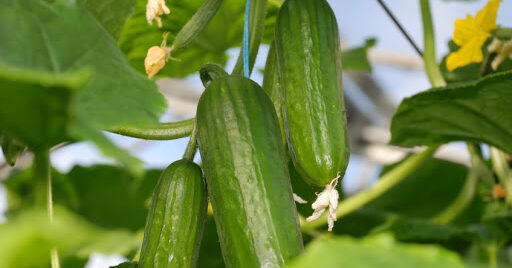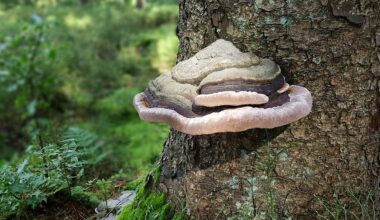The cucumber, Cucumis sativus, is a Cucurbitaceae of Indian origin. Immediately this information makes you think of India! You think India = warm and sunny climate, right? Cucumbers are only cultivated in the spring and summer, because they can’t stand the cold and need light.
For the record, cucumbers were acclimatized in Egypt in ancient times, before being adopted by the Greeks and Romans – so it is often seen as a Mediterranean vegetable, and most varieties are rather adapted to this climate.
Contents
Why don’t my cucumbers grow?
There can be many reasons why your cucumbers don’t grow, however, the most common ones are listed below. In addition to this list, we offer you 10 tips to ensure that you grow your cucumbers in good conditions.
Soil doesn’t stay moist
Cucumbers can be bitter, twisted or irregularly shaped, which has already put many off. To avoid these setbacks, simply water regularly. This means watering regularly with the watering can in the greenhouse or in dry weather. A little watering every day is better than a lot of watering once a week.
They don’t have enough fertilizer
Remember to give a little fertilizer 4 weeks after planting as cucumbers are greedy plants. You can use a liquid tomato fertilizer every 2 weeks that you dilute in the water or use an organic fertilizer in granules that you incorporate a small handful at the foot of each plant with a mop.
You do not use mulch
Some people decide to mulch their plants when they are about 20 inches tall. For ease of use, we use geotextile sheeting. However, it is important to make sure that it is laid before planting. The soil must be well loosened and amended with compost. Once the tarp is in place, I make cross-shaped incisions and fold the flaps under the tarp.
I then transplant my plants with a bulb planter. After planting, I take out the flaps and put them back flat at the foot of the plant. This way, the soil is completely covered.
Insects eat your cucumbers
You choose to go organic and do not use any product? Then check your plants regularly for insects. If your chickens cleaned the ground well in the winter or if you used slug pellets in the early spring, your plants will probably not be affected by slugs.
Cucumber beetles can be found in your plants
It is rarely seen in our region, but if it happens to you, you will have to prevent it from spreading. You can eliminate it manually or cover your plants with an anti-insect veil. Think twice before using pesticides because they do not distinguish between harmful and beneficial insects.
10 tips for growing cucumbers the right way
1. Choose the right seed variety
Choose cucumber seeds that are suitable for your garden. I’ve already mentioned climbing varieties and compact varieties above. If you have a large garden or a huge greenhouse, don’t hesitate to create an elaborate support at the foot of which you will transplant a plant every 8 inches. The plant emits tendrils which allow it to hang easily. The fruits are firmly attached and are not likely to fall. If you have to make do with a smaller garden or greenhouse, I recommend the compact variety.
2. Choose the ideal location
Choose a sunny location in rich, well-drained soil, either in the ground or in the greenhouse. Cucumbers are sensitive to powdery mildew and hate rain and humidity. Its leaves become covered with a white felt that, if not taken care of, can spread quickly to the whole plant and compromise the harvest. If you are not lucky enough to have a greenhouse, it may be better to grow dwarf cucumbers in pots. You can then easily put them under cover during bad weather.
3. Sow indoors
You want to harvest quickly and avoid pest attacks on your seedlings? Sow indoors in P9 pots one month before the last frosts end (around April 15 in our regions). The plants will develop very quickly, especially if you have a heated greenhouse equipped with horticultural lamps. Place your plants in a warm and very bright place.
In the heated greenhouse, set the temperature to 75.2°F for germination, then turn on the lamps every day for 15 to 18 hours as soon as the small shoots appear or, even better, when the soil starts to rise. When the plants will present their first true leaves, place them outside in an unheated greenhouse to harden them. Beware of night frosts, however. Transplant the plants when they have 2 to 3 true leaves and the temperature is above 41°F at night.
4. Making a support for climbing varieties
If you have chosen climbing varieties, think about making a support for them on which they can hang. The choice of materials is vast. Preferably use recycled material that will also serve as decoration for your garden and give it a little retro look.
An old grid or concrete lattice will do the trick. However, your support must be solid; a simple string will not be able to support the weight of the plant. If you find that the plant doesn’t hang on well or the fruit is too numerous and heavy, don’t hesitate to add additional ties and supports.
5. Guide the cucumbers on ropes.
If your greenhouse is high enough or has bars in the ceiling, consider attaching ropes to the ceiling and securing them in the ground. This will give your cucumbers an inexpensive way to climb. Tie each plant with a tomato clip just below the first knot. Then continue to tie the plants as they grow, using a tomato clip every 12 inches.
6. Transplant the plants to the garden after the Ice Saints
Cucumbers are frost sensitive. It only takes one night in slightly negative temperatures to kill the plant. Therefore, do not transplant your cucumbers into the garden unless you are sure that all risk of frost is eliminated and that the soil is sufficiently warmed.
To plant directly in the ground, wait until the soil has reached a temperature of 59°F. Use a soil thermometer to make this measurement. Cucumbers like a soil with a pH between 5.5 and 6.8. To test the acidity level of your soil, I recommend using a pH and hygrometry tester.
7. Do a second planting
Many gardeners (including myself in the beginning) make the mistake of sowing cucumbers once. The seedlings were done indoors and taken out as soon as the weather permitted. We are understandably proud of our first cucumbers. Family and neighbors are very happy with the cucumbers that we have been distributing for weeks.
But then, at the end of August, the source suddenly dried up. Sowing a second time at the end of May would have allowed us to harvest cucumbers until October. I therefore advise you to sow directly in place at the end of May and if you are afraid of slug attacks, protect the young plants by covering them with a bottle or use some slug pellets if the pressure is really too strong.
8. Sow in rows (along supports)
Sow your climbing varieties directly at the foot of your supports in rows spaced 2 to 4 inches apart, at a depth of 1 inch. Then thin out your seedlings to leave only one plant every 8 to 12 inches.
9. Sow in clusters (horizontal, along ropes or in pots)
Cucumbers hate having their feet in water. When you sow them around a rope, do it in a circle at 12 inches around it and create small mounds in which you will place 4 to 5 seeds. Then keep the 2 most vigorous plants.
For the culture of mini cucumbers in pots of 10 to 20 L, make 2 holes spaced of 8 inches and deposit 2 seeds there. Eliminate the weakest plant by pinching it at the base when it presents 2 to 3 true leaves (attention, the cotyledons do not count). Do not pull on the plant to remove it as you could damage the roots of the plant you wish to keep.
10. Harvest regularly
Harvest cucumbers when they have reached the size you want. Don’t let them get too big or yellow, they will be inedible. It is better to distribute your surplus around you than to leave it on the plant. A regular harvest stimulates the production of new fruits. Don’t forget to fertilize and water. A liquid fertilizer every two weeks or organic fertilizer in granules every 2 months. It is not uncommon to see plants perish from lack of food and water.








